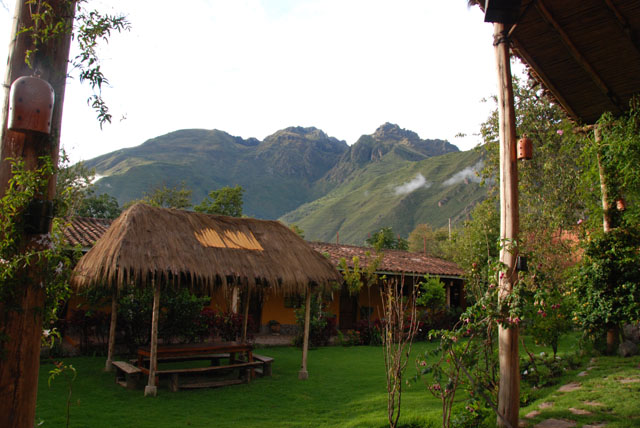
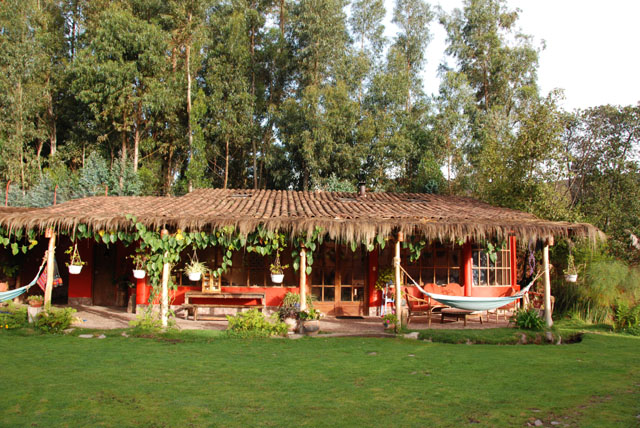
Along the Inca Road
March 26, 2011 - Ollantaytambo & Guinea Pig
Morning dawned rather quickly after our long bus ride from Cusco. Joan was feeling much better in the morningand it was a good thing because riding the river was the first thing on today's agenda. The Hatun Wasi Sacred Valley Hotel was a nice place to spend the next two days. The setting was spectacular and the accomodations were comfortable.


The hotel's location under the snow dusted peaks was spectacular!
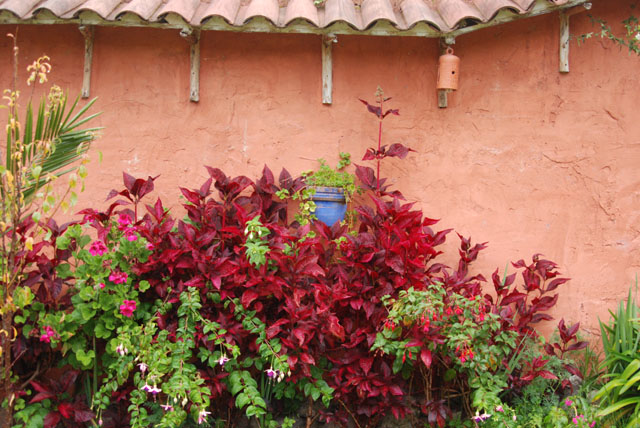
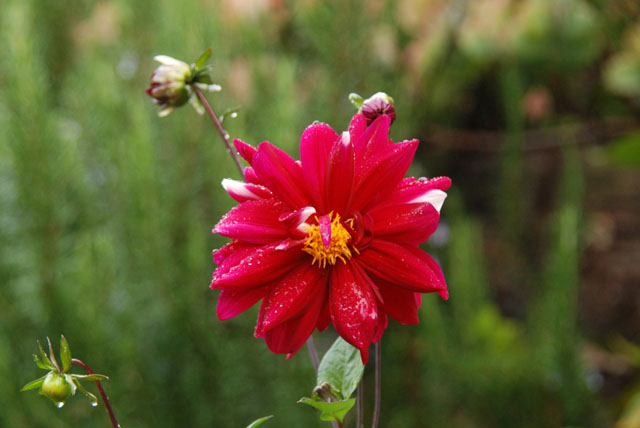
Flowers were everywhere on the hotel grounds.
After breakfast we headed for the Urubamba River to begin our brief rafting trip. At this time of the year the river was smooth with just a few rapids here and there. The actual trip took about an hour and took us past Inca terraces that were constructed right on the banks of the river. At a few spots along the banks we saw pre-Inca buildings dotting the hillsides as well. It's difficult to identify which cultures lived in the Sacred Valley but it appears there were many hundreds of years before the Inca.
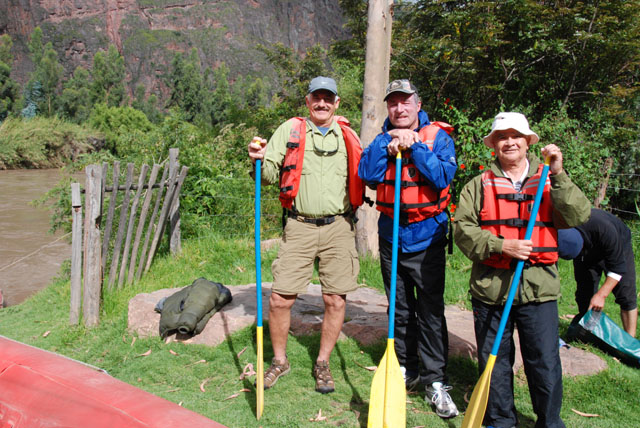
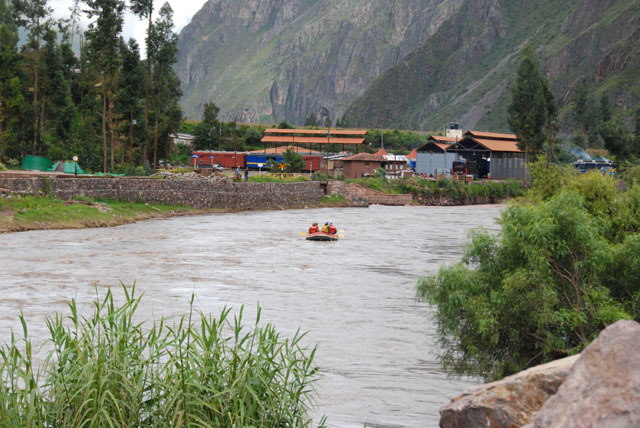
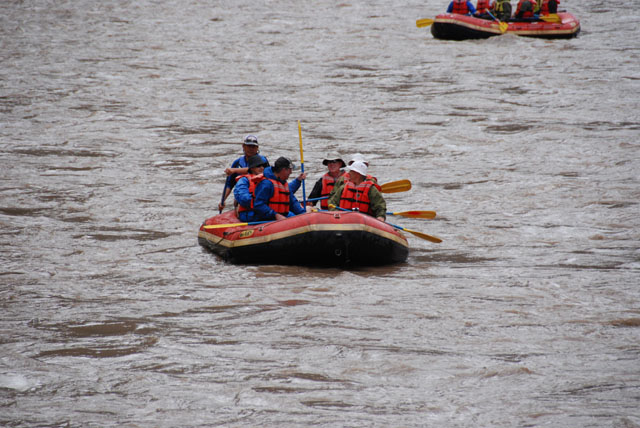
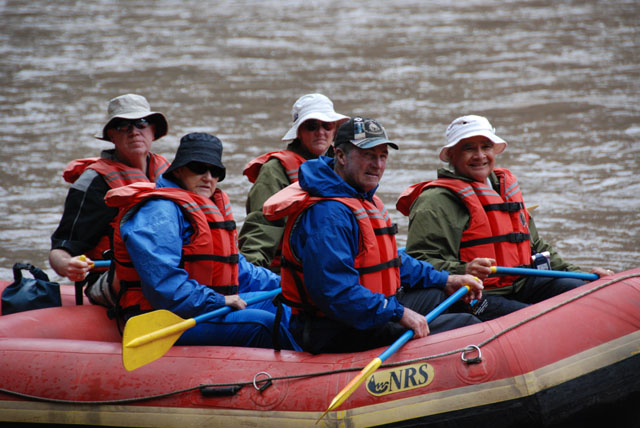
Yup, a few happy paddlers on the Urambamba!
Once we had completed the river trek, counted heads to ensure no one had fallen overboard, we proceed into the town of Ollantaytambo to take in the sights.
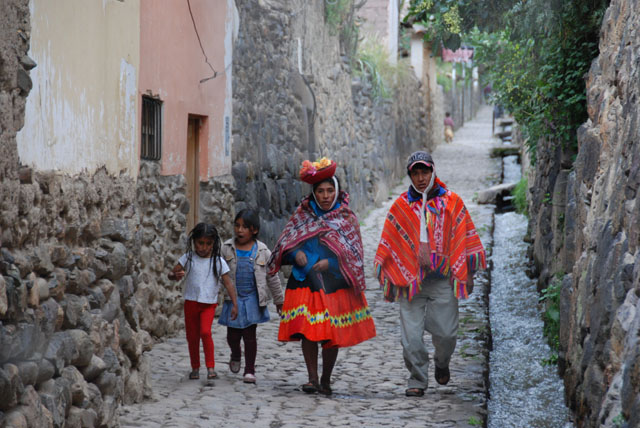
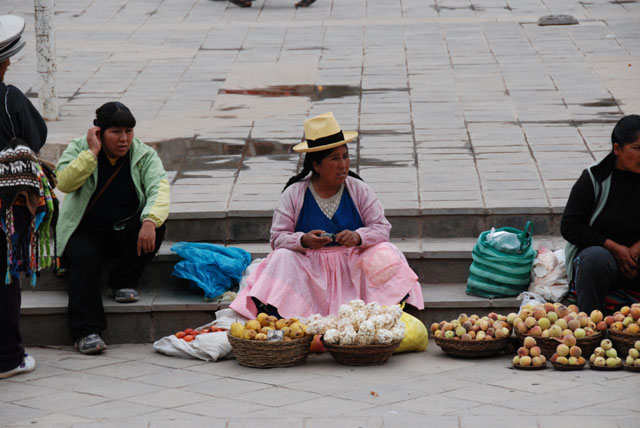
The man on the right is celebrating his birthday with his family. In the other photo the lady's high white hat indicates she is from a valley where snow or glaciers are found.
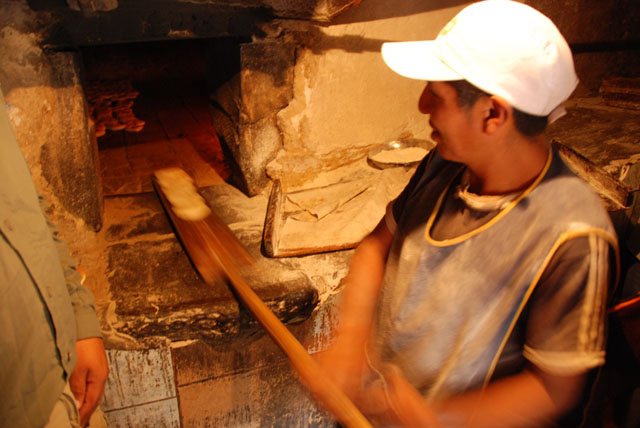
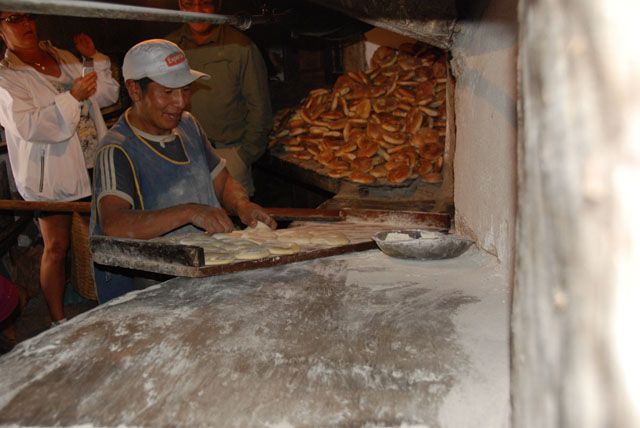
This baker tolerated our bunch of nosey tourists as we watch him bake the morning's breakrfast rolls for the town.
During the last days of the Inca Empire, Ollataytambo was the stronghold for Manco Inca. The location was ideal for the Incas to hold out against the Spaniards and try to fight the conquest. Unfortunately the Inca Empire was in a state of rebellion and the wrong things were in the right place for the Spanish to conquor an empire with less than 200 men.
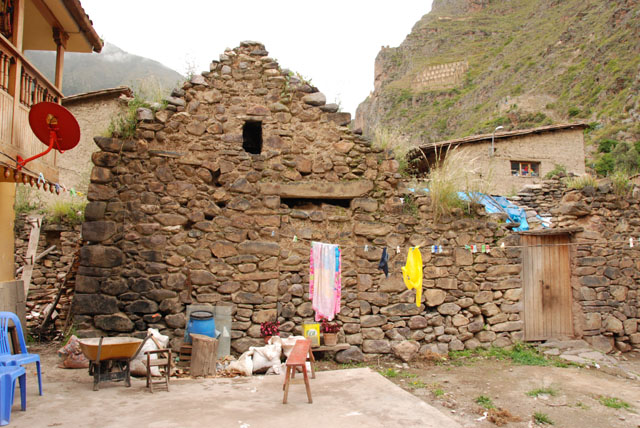
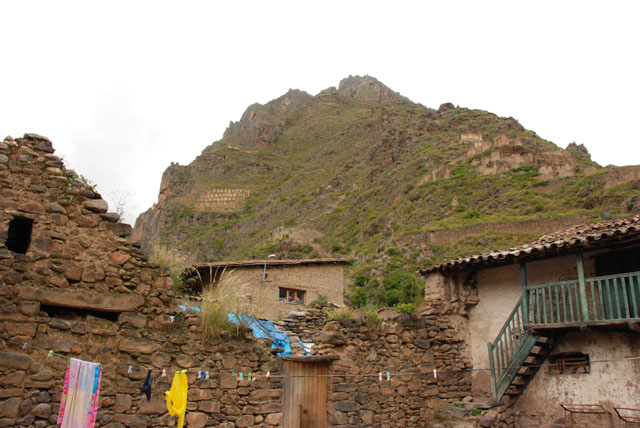
The remains of past times still live on in Ollantaytamblo
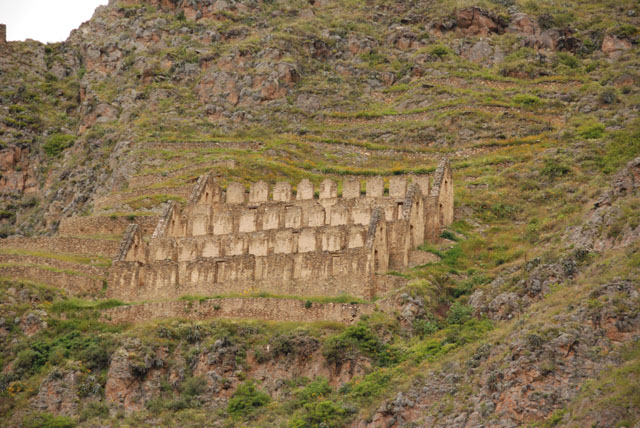

The old and present still exist.
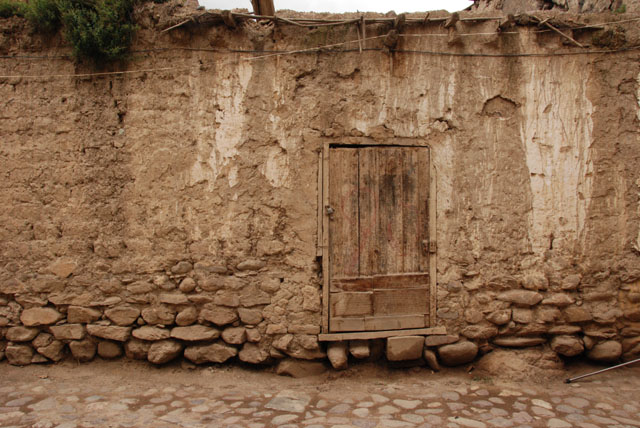
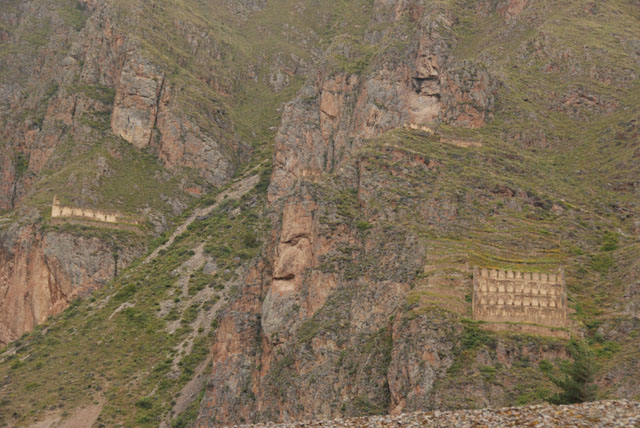
Ollaytaytambo is a city of history. This door way is still used while the graineries on the mountainside sit in quiet solitude.
Today you will see evidence of various construction techniques mingled in the basic wall and terrace constructions. The Inca used what they found and added their construction and architecture values to existing structures. The basic rock material is rose rhyolite which was quarried across the river. Ramps, roads and slides show how the Inca moved the stones from the quarries from one location to another.
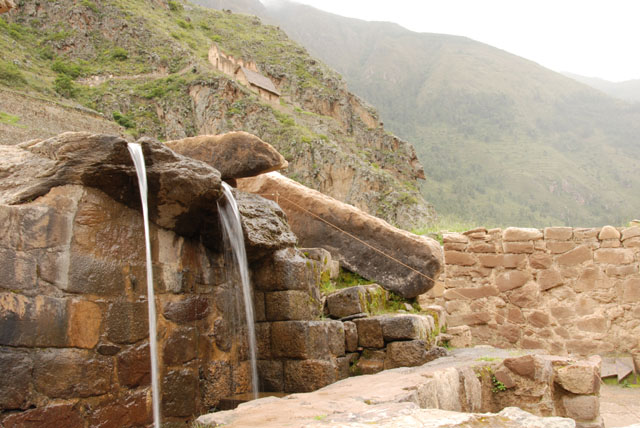
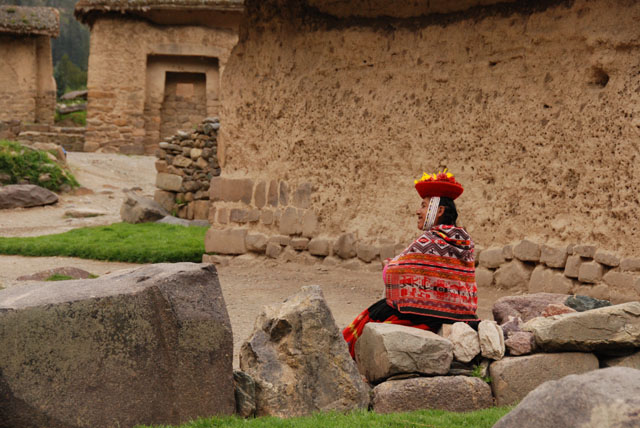
The bath of the princesses still runs clear and fresh. On the other side of the plaze a lady sits, wearing her skills in weaving.
Gazing across the valley structures appear hundreds of feet higher on steep slopes miles across from where one is standing. The Inca used these structures to store their grain. They had the knowledge to also construct these graineries with ventilation systems which kept their crops free of fungus and which could be stored for several years.
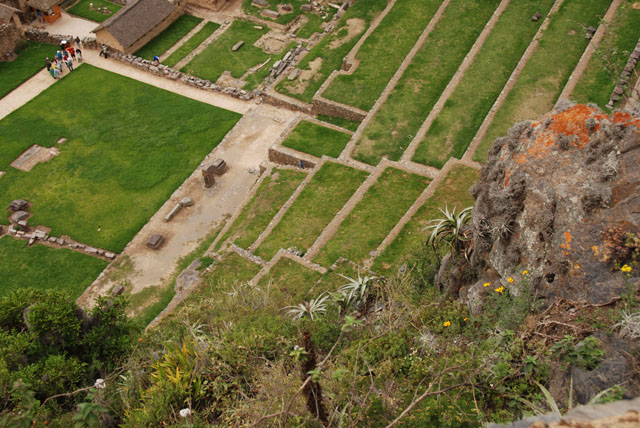
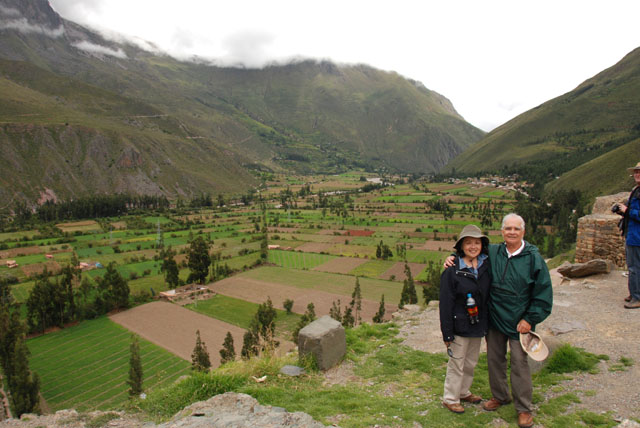
The terraces at Ollataytambo reveal how lush the valley is to grow the basic crops.

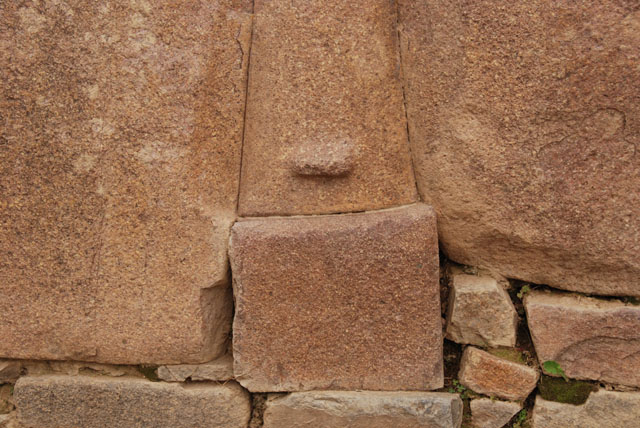
Details of the Wall of the Six Monoliths
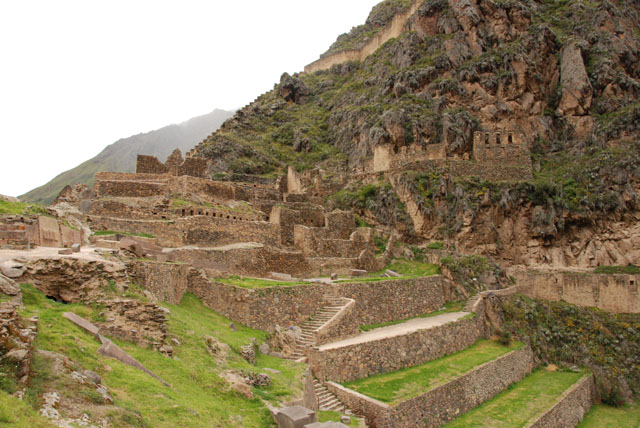
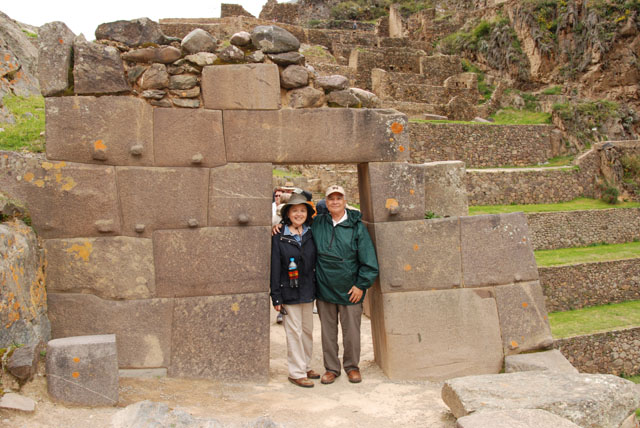
The ruins at Ollataytambo contain the works of several culture, not just the Inca. Joan and I stand under a doorway with a stone lintel. The Inca never did use the arch to bridge a gap over a door or windwo. The knobs protruding from the rock are connections points the builders used to lash ropes to move the large heavy stones from one spot to another. As is the case with all Inca construction, the random fitting of the stones contributed to the stablity of the walls during an earthquake.
After exploring the various Inca ruins it was time for lunch and we had a surprise as to whee lunch would be. A brief ride on the bus took us to the home of a lady named Enna. She, her mother and two daughters would treat us to a typical highland lunch, complete with Cuy!
Several members of our group agreed to help Enna make "tortillas," not the Mexican kind but Peruvian tortillas, which are basically potatoe pancakes. It really does help to understand that the work tortilla can mean several things south of the U.S./Mexican border. In Mexico a tortilla is a corn based flat bread. But in Central and South America a tortilla can mean sandwich or turnover. Regardless of the term, it's normally a tasty item not to be ignored.
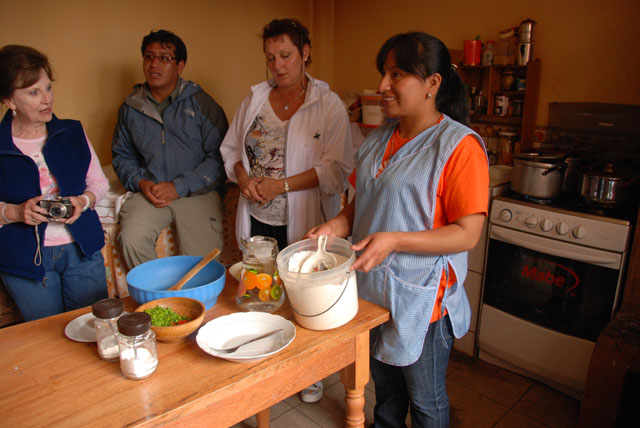
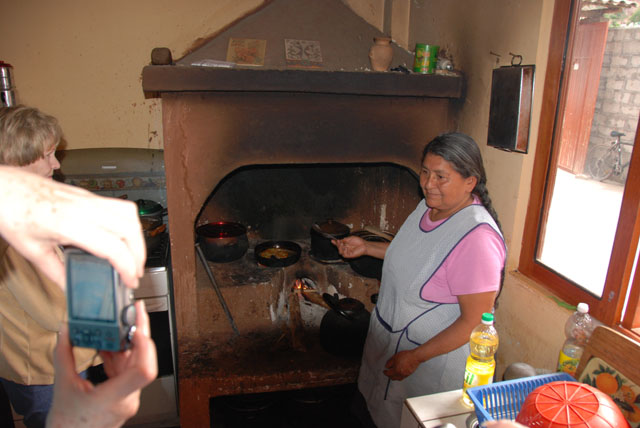
Enna gets all the ingredients ready. Enna's mother preps the stove so the tortillas can be cooked.
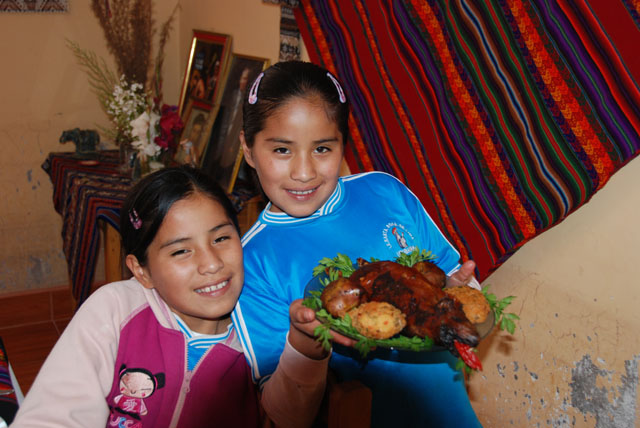
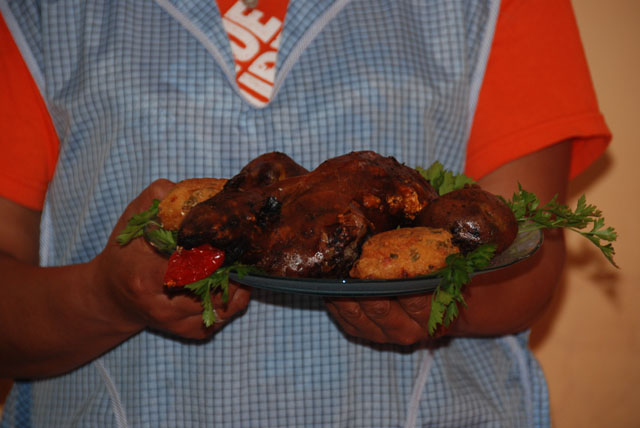
Enna's daughters present us with the main course, Cuy or Roasted Guinea Pig! It was delicious!
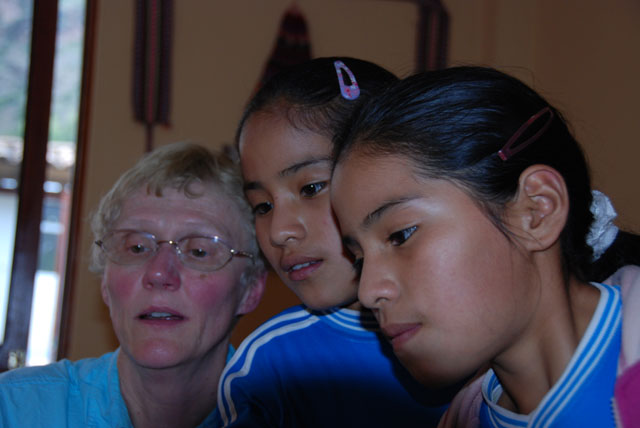
The girls were entralled as Donna Sweet showed them pictures of her home in Craig, Colorado.
After lunch we headed back to hotel, but not without one more authentic taste of Peru.
Our after-lunch stop was at a chica bar. Chica is a corn base alcoholic beverage which can be made in a variety of flavors. Nonetheless, the place we stopped had a red plastic bag on pole telling us fresh chicha was available to day. So, we stopped and had our taste of chica. I found it too tart and Joan liked; go figure.
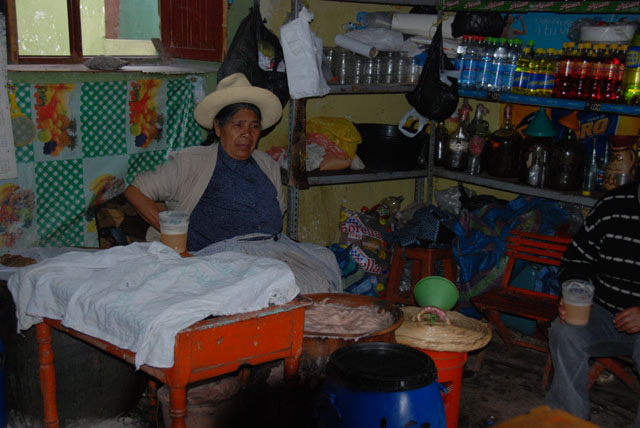
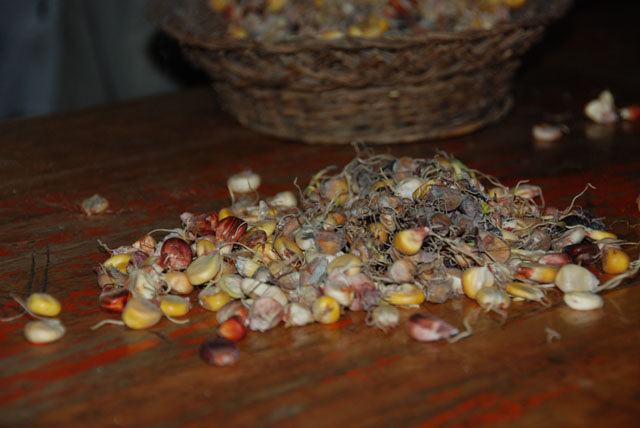
The Chica Lady and her ingredients.
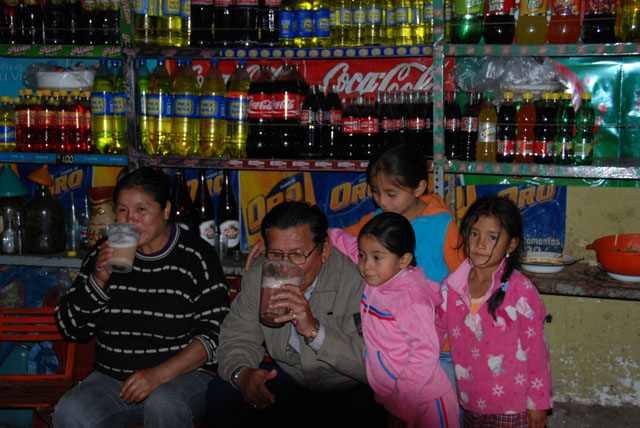
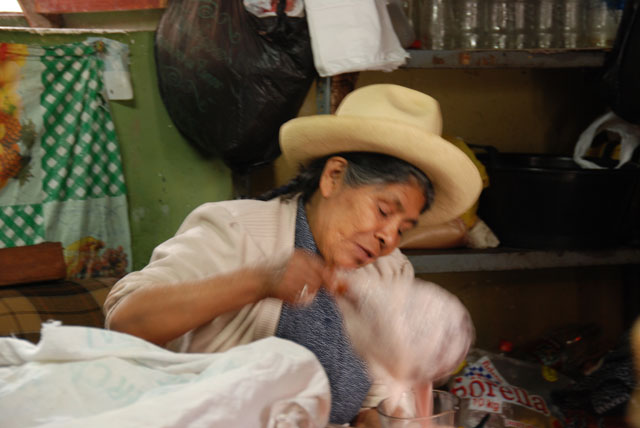
Some satified customers and the Chica Lady keeps on ladling!
By now the sun was setting and we were ready to head back to the hotel. After all, the next two days would be the reason we had all signed up to visit the Sacred Valley, Machu Picchu!
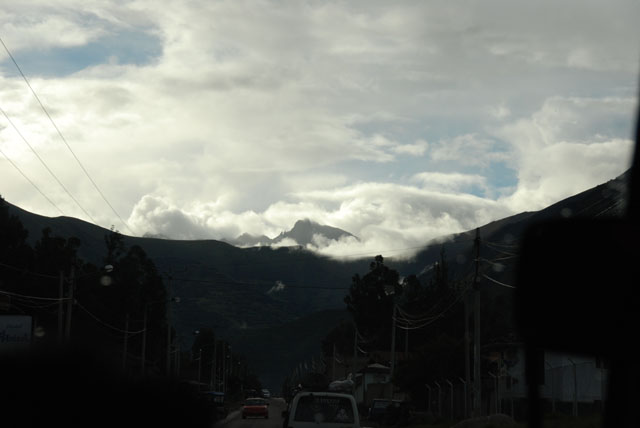
Days end in Ollataytambo.
More Galván Trips & Travel Posts
Copyright 2011 Anthony Galván III